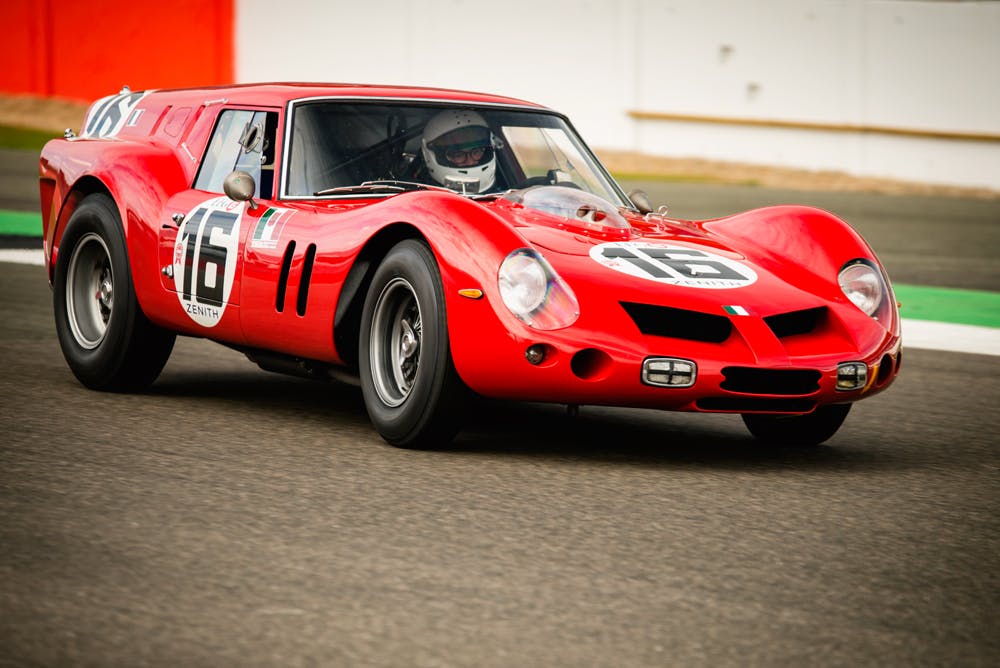Media | Articles
1-of-1, $14M Ferrari Breadvan stuffed into wall during race
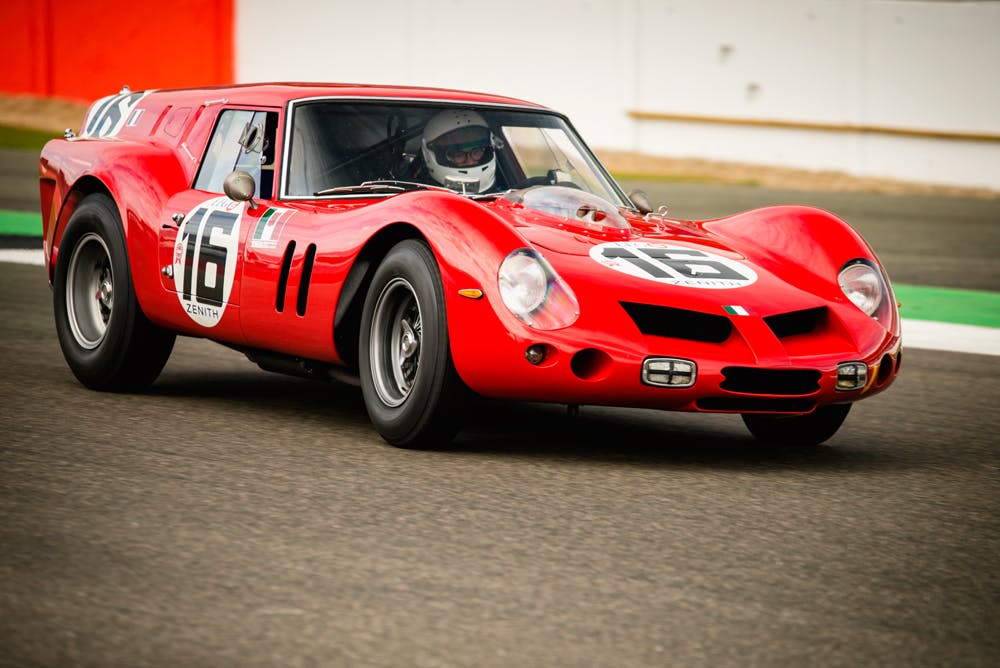
If you live near the French village of La Sarthe and are still wondering why that DoorDash order of fresh baguettes never arrived, we might know why. The beloved, one-of-one Ferrari 250 GT SWB Breadvan built in 1962 got … a bit bent at this year’s Le Mans Classic.
While running down the Mulsanne Straight during the biannual vintage racing weekend, one of the Breadvan’s three drivers entered the first chicane—a right-left affair known as L’Arche—too quickly and lost control. The spin sent the shapely machine over the left curb and into the tire wall. Luckily, the driver exited the car under his own power just moments after the vehicle shuddered to a stop, and he appeared uninjured.
While the driver was able to walk it off, the Breadvan fared far worse. The crash damaged its front, right side, and rear end, eliminating it from competition.
Disaster for the Breadvan! 😭 The one-off modified Ferrari has been crashed at #LeMansClassic. Luckily, Le Mans Classic isn't finished yet, watch it here ➡ https://t.co/xpSvqgdqpc#LMC #LeMans #LeMans24 #Ferrari #Motorsport pic.twitter.com/R29fosVotO
— Motorsport.tv (@MotorsportTV_UK) July 3, 2022
The Breadvan began life as a 1961 Ferrari 250 GT SWB Competition (chassis #2819 GT), painted gray metallic with red/yellow/black stripe. The car made its competition debut at the 1961 Tour de France wearing the original 250 GT SWB bodywork at the hands of Belgian racing team Ecurie Francorchamps.
Marketplace
Buy and sell classics with confidence
Italian nobleman Count Giovanni Volpi purchased the car shortly thereafter, with the intent to take it racing the following year against the Ferrari Factory team’s new 250 GTO. Volpi had initially tried to buy a GTO for his Scuderia Serenissima team to campaign, but Enzo—a historically petty man—refused to sell him one since Volpi had hired a few former Ferrari factory employees to help stand up a competitor marque called Automobili Turismo e Sport (ATS). So much for Volpi’s “most serene” racing stable.

Perhaps invigorated by the drama, Volpi enlisted Giotto Bizzarrini to help him modify chassis #2819 GT to be more competitive with the factory 250 GTOs that were enjoying a strong showing early in the 1962 season. Bizzarrini worked with body specialist Piero Drogo to help develop that unmistakable roofline.
While the boxy rear is the car’s most conspicuous feature, it’s not the only modification made by Bizzarrini and Drogo. They also moved the Tipo 168 V-12 engine and its radiator further towards the car’s center and swapped out the trio of 46 DCN Weber carburetors for six twin-choke 38 DCN Webers. After some weight reduction at the hands of Modena’s Giorgio Neri and Luciano Bonacini (the latter of whom would end up at DeTomaso), the Breadvan was 200 pounds lighter than a contemporary, factory-built GTO.
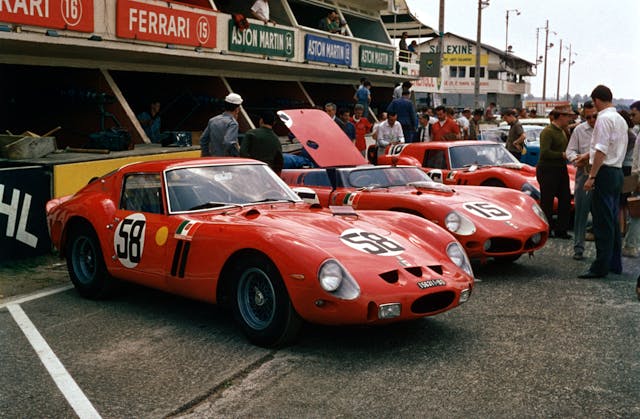
The Breadvan debuted (in fully modified form) at 1962’s 24 Hours of Le Mans, where it made quick work of the pesky factory GTOs—until a driveshaft failure forced the its retirement in the fourth hour of the race. (None of Volpi’s cars would finish that year, sadly.) Despite a handful of class victories in other races that year and a few additional competitive showings through the mid-’60s, the Breadvan never succeeded in dominating the factory GTOs.
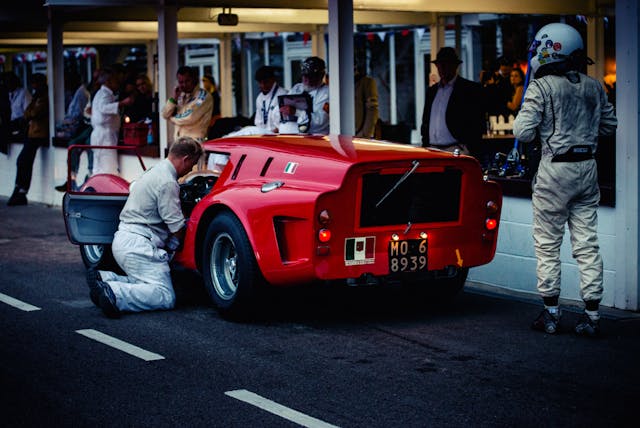
However, beginning in 1974, the Breadvan became a fixture at historic races—and it hasn’t stopped since. Campaigned by a team of privateers, it’s a regular at vintage racing events on both sides of the pond, at the Rolex Monterey Motorsports Reunion (née the Monterey Historics) in California and at the Goodwood events in the U.K.
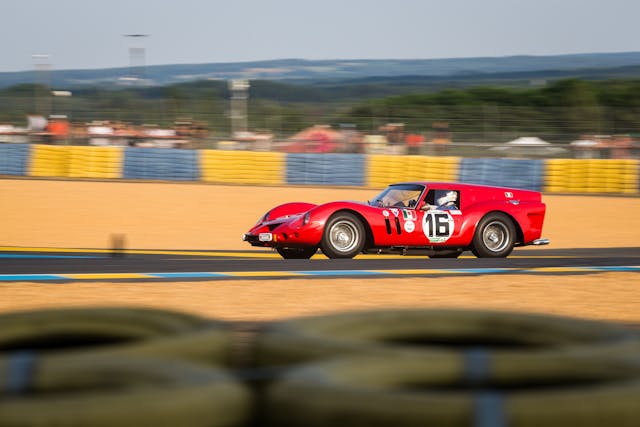
It’s not babied, either; the car is driven hard everywhere it competes. Though 2022’s crash is significant, it’s not the first battle scar earned by the Breadvan, which suffered nose damage at the 2015 Goodwood Revival before soldiering on to complete the race. The metalwork was lovingly restored following that event.
If we’re lucky, a similar effort is already underway to repair the damage from last weekend’s tire-wall smooch—and get the Breadvan back on track where it belongs.








